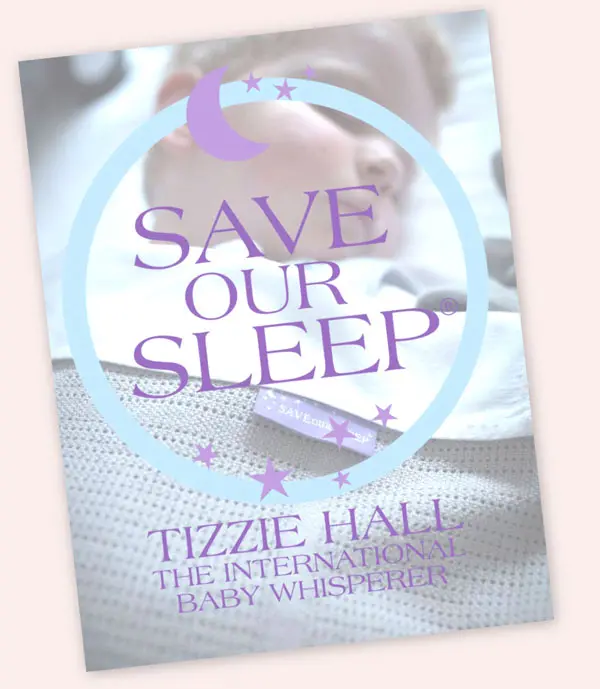Parents are often concerned about when to start setting boundaries and if it is too early to put boundaries in place. I believe you should set boundaries from day one: boundaries around sleep and boundaries around feeding. For example, I teach parents to only put their newborn baby in her cot when they expect her to have a sleep, and if they are not sure if she is tired enough to sleep, to pop her into her pram and go for a walk so she can catnap. I also advise parents that if they are feeding their five-month-old and she starts blowing raspberries, mealtime is over.
These are clear boundaries that are set from a very early age. With the help of the information in this chapter from Save Our Sleep, you will know what other boundaries to set and when to set them. For example, you do not need to set a boundary of not touching the fireplace before your baby is moving around. But when she starts crawling and moves over to explore the fireplace, that is when you start setting the boundary.
If there is something you do not like your toddler doing but do not feel strongly enough about it to set a boundary – such as pulling the magazines out of the magazine rack – it is better to distract her and encourage her to do another activity than try to set a boundary you will not enforce consistently. It will be very confusing for your toddler if some days she is allowed to play with the magazines but other days she is not. If a particular behaviour is a definite ‘no’ then you need to set the boundary firmly and not give up until you have won the challenge, as explained further in this chapter.
If your partner is not as firm as you in setting boundaries, do not worry that all of your hard work will go to waste. What often happens is your toddler learns there is one set of rules when she is under your care and another when your partner is in charge. The same applies when your child is in child care or is cared for by grandparents who may not enforce all your boundaries.
I have found moving from always having your toddler in her stroller while out and about to allowing her to walk with you quite an easy exercise. When your toddler starts to walk and shows interest in getting out of the stroller, you should wait until you are in a park or an area free of traffic.
Ask your toddler if she would like to walk. If she says ‘yes’, tell her she needs to hold Mummy’s hand. At first she will be happy to do this because she needs the security of Mummy’s hand, but after a while she will try to test you by letting go of your hand and running off.
Tell her in a firm, authoritative voice: ‘You have to hold Mummy’s hand. If you are not going to hold Mummy’s hand you are asking Mummy to put you back in the stroller. I don’t want to put you back in the stroller but if you refuse to hold my hand I will have to put you back in the stroller.’
If your toddler still refuses to hold your hand, put her back in the stroller. This might cause a tantrum but it will only last a couple of minutes and each time you do this the tantrum will last for a shorter time.
As your toddler gets older and more adventurous when out of the stroller it is a good idea to use a child harness or backpack buddy on your child with a strap around your wrist so if, by mistake, you get side-tracked and let go of her hand, you have the back-up of the harness. However, it is important that you teach your toddler to always hold your hand or, when she is older, to hold on to the stroller. If she refuses, put her back in the stroller and strap her in.
As your toddler gets older you need to teach her simple boundaries such as if she can see you then you can see her and that she is not allowed to let you out of her sight. As she gets older and can be trusted not to hold your hand or the stroller the boundary is she is not allowed to let you out of her sight or to go around corners or to cross the road.
Tell your toddler: ‘Mummy doesn’t want to hold your hand. She wants to let you go ahead like a big girl. However, if you go where Mummy can’t see you I will make you come back and hold my hand because you are not old enough to go ahead.’ The age you take this approach will depend on the maturity of your child but I would normally not use it for a child under three years. Having said that, you could use this approach with a younger child in a park or traffic-free area.
On the subject of running away, a good boundary to teach your toddler is she is not allowed to run at the swimming pool. If she runs from A to B, rather than saying ‘stop running’ you are better to take her back to point A and make her walk.
If a toddler runs from A to B and is stopped in the middle she will realise she can still get to her destination faster than if she had walked. But if you make her come back to point A she will realise running does not get her to point B faster.

Join our newsletter and receive a FREE download of the world famous Save Our Sleep Safe Bedding Guide delivered straight to your inbox!
PLUS you will also receive a thank you gift offer shortly after.